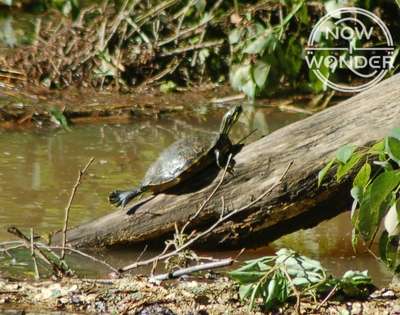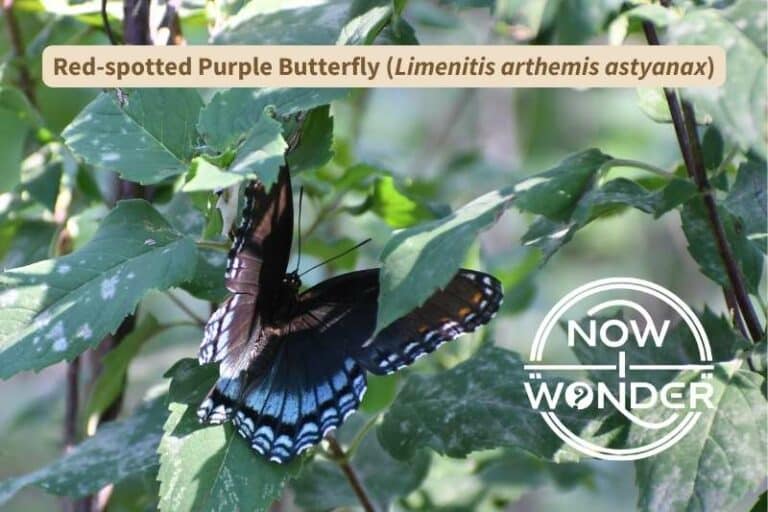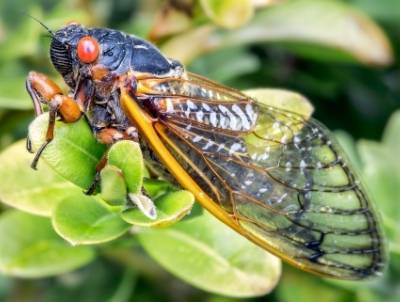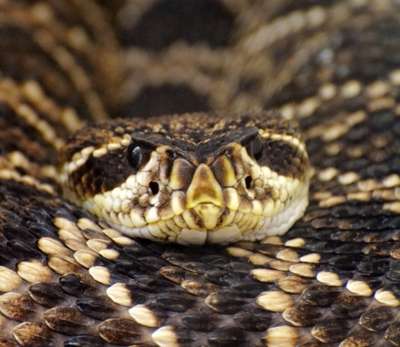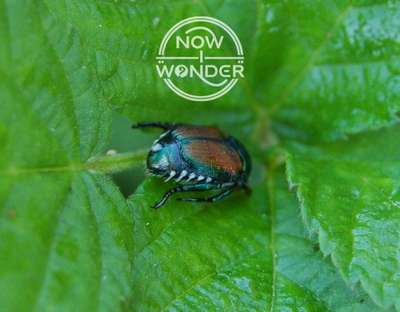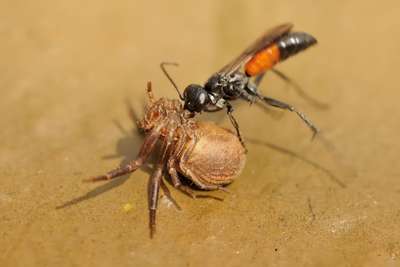Dragonflies are some of the largest and most impressive insects in the world. They are also powerful predators, thanks to some of the best flight skills and vision in the insect world.
All dragonfly species are predators through all stages of life. They hunt and eat other living creatures to survive. Baby dragonflies are aquatic and hunt small animals underwater. Adult dragonflies eat insects only, which they catch on the wing. Dragonflies of all ages are also cannibalistic.
Dragonflies are fascinating insects and can be fun to observe. Read on to learn more about what dragonflies eat, how they hunt, and how you can watch them do it.
What Do Adult Dragonflies Eat?
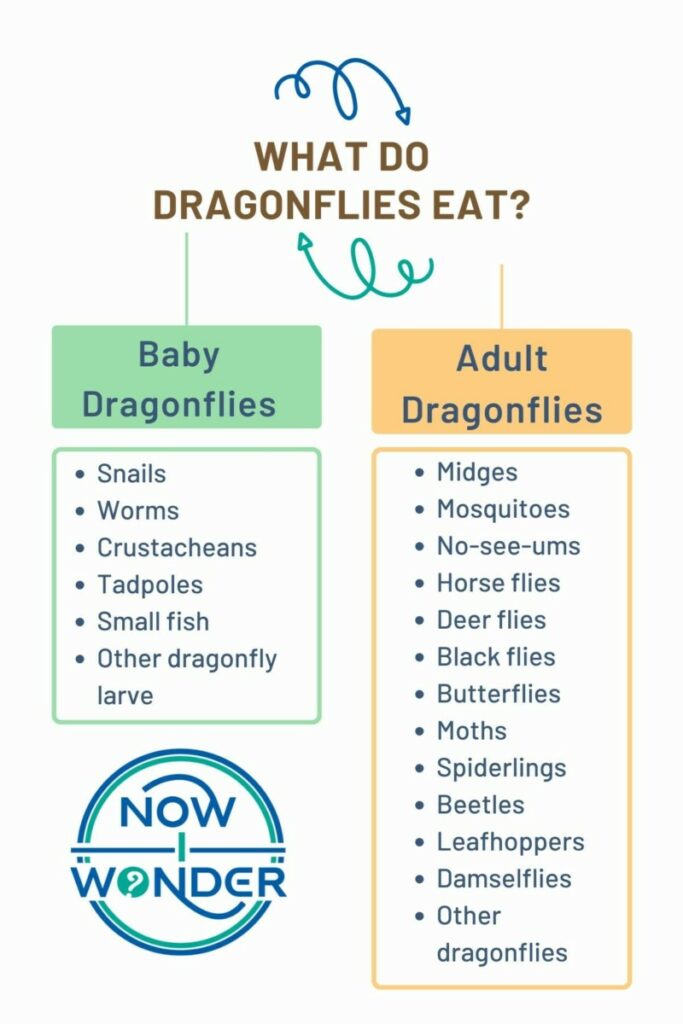
Dragonflies are predators. They are carnivores who feed on other animals. Adult dragonflies hunt mainly flying insects. Their favorite food is small, biting flies, like black flies, midges, and mosquitoes.
Dragonflies are opportunistic hunters. They will attack and eat whatever insect prey happens to be most abundant in their area.
Dragonflies take prey much smaller than themselves.
Small dragonflies eat tiny insects like midges, no-see-ums, and mosquitoes. Small dragonfly species include the Eastern Amberwing, Calico Pennant, and Black Meadowhawk.
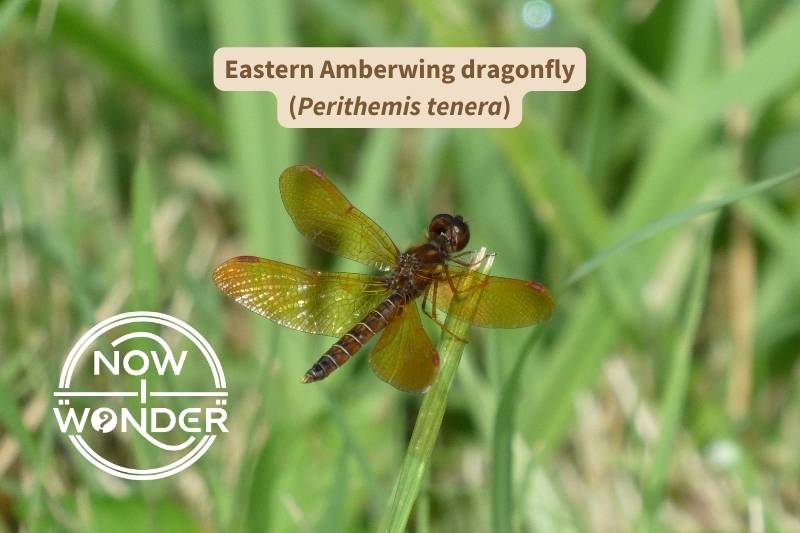
Larger dragonfly species can take larger prey. These can include insects like horse and deer flies, butterflies, and smaller dragonflies. Eastern Pondhawks are one species capable of taking much larger prey than other dragonfly species (May and Baird 2002). Other large dragonfly species include Dragonhunters, some Clubtails, and most Darners.
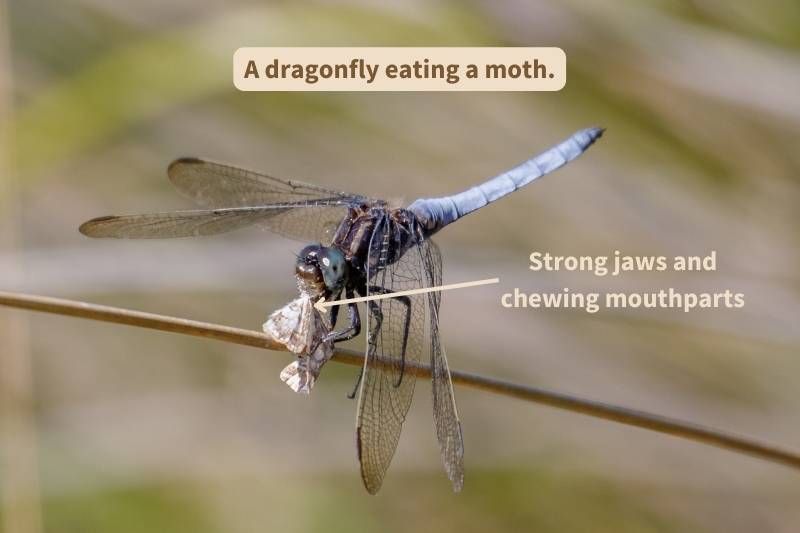
Adult Dragonflies Eat:
- Flies of all kinds and sizes
- Mosquitoes
- Midges
- No-see-ums
- Horse flies
- Deer flies
- Black flies
- Leafhoppers
- Beetles
- Bees
- Wasps
- Spiderlings, especially wolf spiders (Morrill et al. 2021)
- True bugs
- Butterflies
- Moths
- Other dragonflies
- Small grasshoppers
- Damselflies
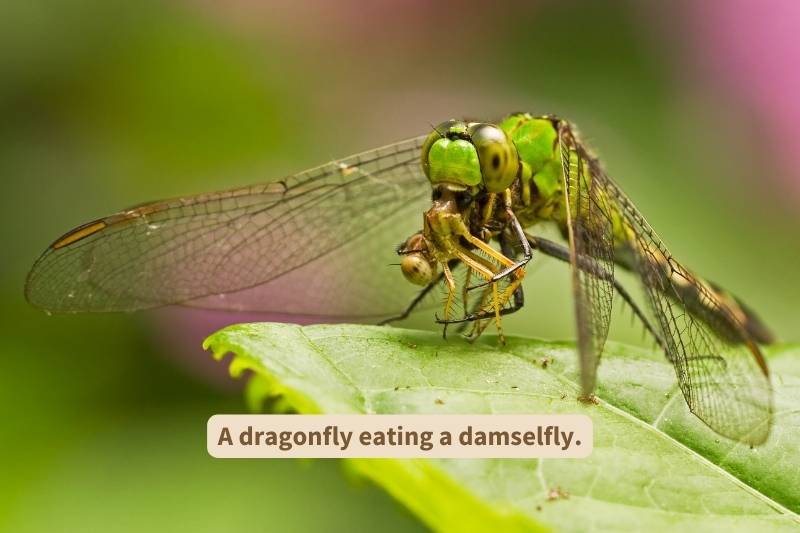
Damselflies are cousins to dragonflies. Both are classified in order Odonata. Although similar in some ways, they are different creatures from dragonflies. To learn more about damselflies, check out this other Now I Wonder post “What is the difference between a dragonfly and a damselfly?“.
How Do Adult Dragonflies Eat?
All dragonflies catch their prey while flying. They are superbly adapted to hunting on the wing in two ways.
First, dragonflies have superb vision, thanks to their huge compound eyes. Dragonflies are extremely good at detecting motion across a 300 degree field of view. When they spot flying insects, they fly to intercept.
Second, dragonflies are superb fliers. They can fly forward more than 100 body lengths per second (Paulson 2011) and up to 35 miles per hour (Abbot 2015). They are agile fliers and can fly backwards and hover.
Different types of dragonflies use different techniques to hunt flying insects.
Some dragonflies are “hawkers”. Hawkers fly nearly non-stop. These dragonflies search for flying insects while on the wing. Dragonflies that hunt by hawking include darners, emeralds, and some skimmers (Paulson 2011).
Other dragonflies are “”salliers”. These dragonflies perch in areas with good visibility and watch for movement. They take flight and fly to intercept when they spot likely prey. Dragonflies that hunt by sallying include clubtails and most skimmers (Paulson 2011).
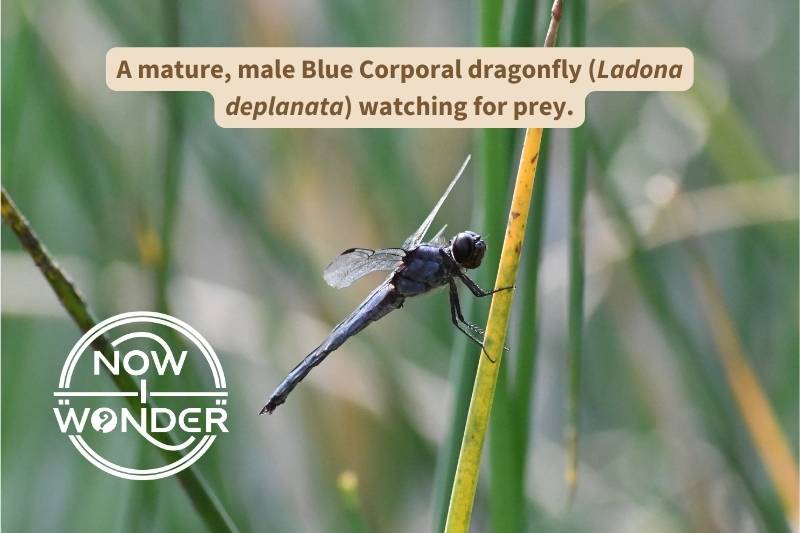
To learn more about the types of dragonflies, check out this other Now I Wonder post “Are there different types of dragonflies?“
Dragonflies capture prey by scooping insects out of the air. Each of their long, skinny legs is lined with a row of sharp, stiff bristles. When ready to attack, dragonflies pull their six legs forward and together to form a basket. They collide with the prey, which becomes trapped by the dragonflies’ leg spikes.
Dragonflies use their front pair of legs to move the prey into position for eating. They have powerful jaws and sharp mouthparts that cut prey into bite-sized pieces.
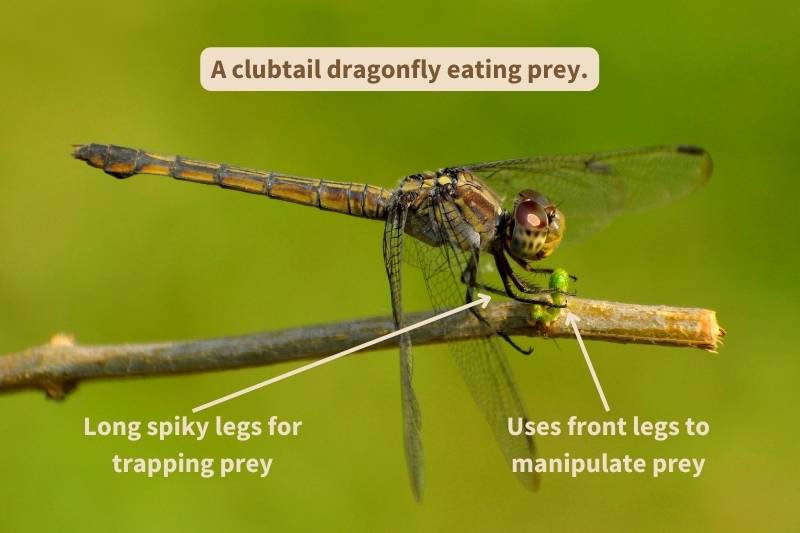
When and Where Do Dragonflies Eat?
Dragonflies fly spring through fall in the southeastern United States. They live and hunt around a wide variety, freshwater habitats and are most active on warm, sunny days. They hunt throughout the day but may seek shade during the hottest part of the day.
Dragonflies may consume small prey while flying. Most land to eat large or unwieldy prey.
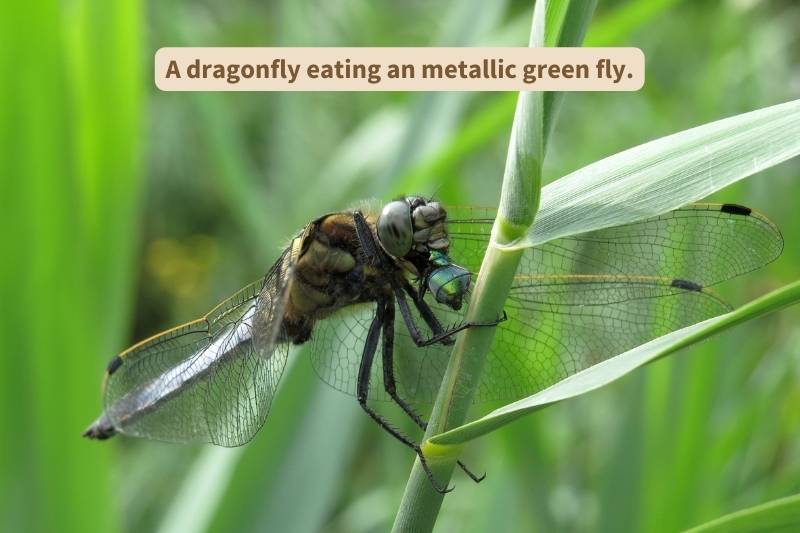
What Do Baby Dragonflies Eat?
Baby dragonflies are called larvae, nymphs, or naiads. They live underwater in ponds, lakes, streams, and rivers. Although they look very different from adults, larval dragonflies are also powerful predators. But unlike adults, baby dragonflies eat more than just insects.
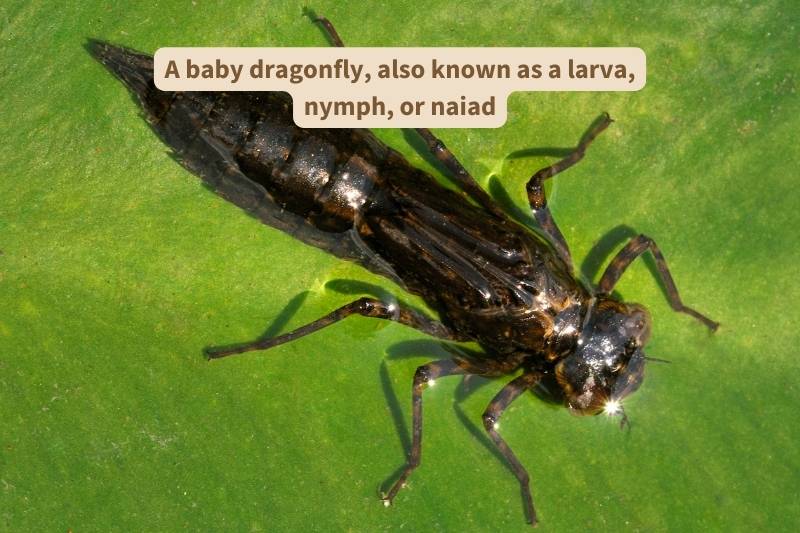
Baby dragonflies eat:
- Mosquito larvae
- Small crustacheans like larval crayfish
- Worms
- Tadpoles
- Snails (Turner and Chislock 2007)
- Small fish
- Baby damselfies
- Other baby dragonflies
How Do Baby Dragonflies Eat?
Different types of baby dragonflies use different techniques to hunt their prey.
Some baby dragonflies are ambush predators- they wait for prey to come to them. They lurk among vegetation or hide under silt or debris on the bottom of a pond, lake, stream, or river. When oblivious prey ventures close enough, the baby dragonflies dart out and attack.
Other baby dragonflies are active hunters- they stalk their prey. Some species climb through underwater vegetation and chase whatever they find. Others burrow through the mud and hunt other burrowing creatures.
All baby dragonflies attack by shooting their hinged lower lips forward like harpoons. The movement happens faster than the human eye can see, and faster than most prey can react. Their lower lips (called a “labium”) have a pair of grasping jaws at the ends, which clamp onto the prey. The baby dragonflies then pull their lower lips back and draw the prey into their jaws.
Do Dragonflies Eat While Flying?
Dragonflies may eat small prey while flying around. Those who take large prey, like butterflies and other dragonflies, usually land to eat. Large prey is heavy and unwieldy. Some can even be dangerous, like wasps and bees. Dragonflies can conserve energy and better control the prey if they land.
What Do Dragonflies Eat Besides Bugs?
Bugs are insects classified in order Hemiptera. All bugs are insects, but not all insects are bugs. Dragonflies eat many insects other than Hemipterans, such as butterflies, beetles, and flies.
Baby dragonflies eat worms, snails, and small crustacheans like crayfish. They even eat small vertebrates, such as tadpoles and small fish.
Do Dragonflies Eat Plants?
Dragonflies are predators throughout their lives. They eat other animals only and do not feed on plants. You will never see a dragonfly munching on fruit or chewing leaves. But they do prey on many insects that eat plants. Many of the plant-eating insects dragonflies hunt do a lot of damage to human food crops.
How to See a Dragonfly Eat
Dragonflies live on every continent except Antarctica and are large insects. So most people don’t have to go far afield to find some to watch. Here are some tips to help you observe feeding dragonflies in the wild.
What you need to see a dragonfly eat
- A warm (but not hot) sunny day.
- A pond, lake, stream or river which has vegetation growing around it.
- Insect and tick repellent.
- A dedication to avoiding tick bites.
- Close focus binoculars. Close focus binoculars are those that let you focus on your feet when standing and looking down.
- A lot of time and patience.
What to do to see a dragonfly eat
- Identify a likely pond, lake, stream, or river.
- You’ll have the most luck finding dragonflies in areas where vegetation grows around the water’s edge.
- Check the weather forecast and plan your trip for a warm (but not hot) sunny day.
- Dragonflies won’t fly on cool or cloudy days.
- Pack insect and tick repellent and dress to cut the risk of tick bites.
- Ticks can transmit dangerous diseases to humans.
- Always wear long-sleeved shirts with snug cuffs, and long pants. Tuck your pant legs into your socks to prevent ticks from climbing up your legs.
- Tick repellent spray is a must to protect yourself from these nasty little arachnids.
- Visit during active hours, like mid-morning and mid to late afternoon.
- Even though dragonflies need warm temperatures to fly, they can get too hot. They often take shelter in the shade during the hottest part of the day.
- Bring bug and tick spray! Use it often and use a lot of it!
- Dragonflies eat flying insects, many of whom bite humans. You’ll enjoy observing dragonflies a lot more if you’re doused with repellent.
- Find a spot where you can see a long stretch of water-side vegetation.
- Look for hawking dragonflies zooming through the air.
- When find a spot that seems to have high dragonfly traffic, settle into one spot.
- Make yourself comfortable; you might be in this spot for awhile.
- Keep still and stay quiet.
- You don’t need to stay motionless. Most dragonflies will ignore your presence and go about their business. But moving around will scare dragonflies away.
- Be patient. Dragonflies exist for themselves and in their own world. Humans are a part of that world but are not particularly important to a hunting dragonfly. If you’re patient, quiet, still, and lucky, a dragonfly will perch nearby with its prey.
- Watch the dragonfly through your binoculars. Bring your binoculars to your eyes slowly and smoothly so as not to spook the dragonfly. Avoid jerky movements. You may see the dragonfly use its front pair of legs to reposition its prey and start biting chunks off.
- Enjoy the gruesome show.
References
Abbott, John C. 2015. Dragonflies of Texas: A Field Guide. Austin, TX: University of Texas Press.
May, Michael L. and Joel M. Baird. 2002. “A Comparison of Foraging Behavior in Two “Percher” Dragonflies, Pachydiplax Longipennis and Erythemis Simplicicollis (Odonata: Libellulidae).” Journal of Insect Behavior 15 (6) (11): 765-778. doi:https://doi.org/10.1023/A:1021171306468.
Paulson, Dennis. 2011. Princeton Field Guides: Dragonflies and Damselflies of the East. Princeton, NJ: Princeton University Press.
Turner, Andrew M. and Michael F. Chislock. 2007. “Dragonfly Predators Influence Biomass and Density of Pond Snails.” Oecologia 153 (2) (08): 407-15. doi:https://doi.org/10.1007/s00442-007-0736-9.

